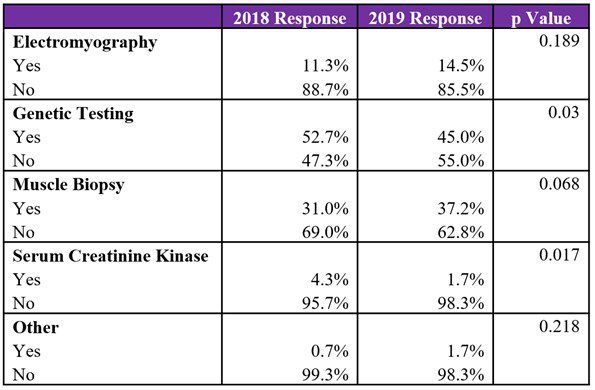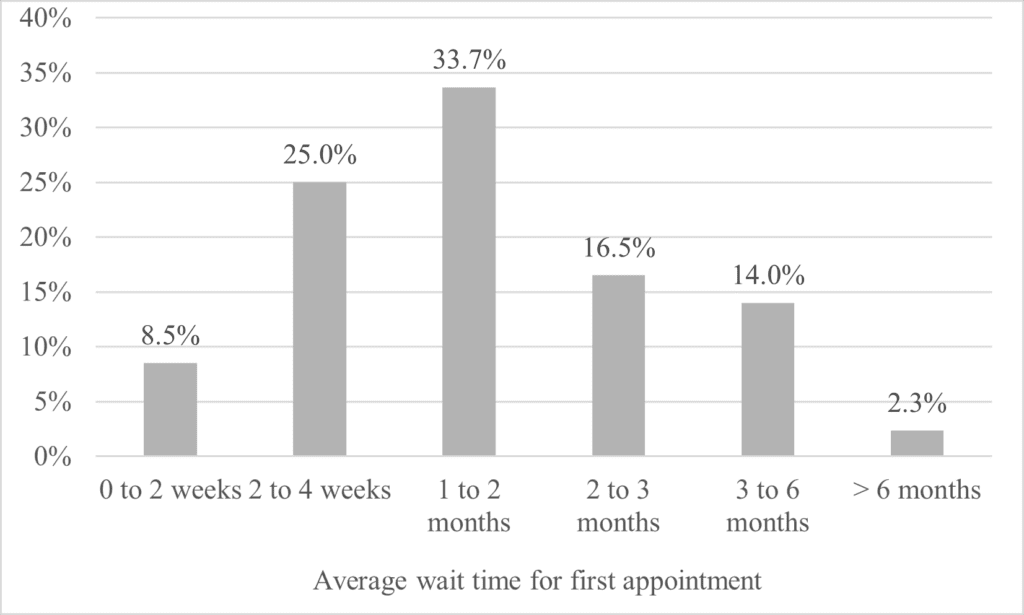In a May 2021 issue of BMC Pediatrics, Cure SMA published a manuscript, titled “Awareness screening and referral patterns among pediatricians in the United States related to early clinical features of spinal muscular atrophy (SMA).” The purpose of the manuscript was to describe the findings of two healthcare provider surveys launched in 2018 and 2019, which examines awareness of SMA amongst general pediatricians and explored potential contributors to delays in diagnosis experienced by individuals with SMA and their families.
One of Cure SMA’s key educational goals is to reduce diagnostic delays in SMA. Clinical trial data suggests early treatment, especially when administered presymptomatically, improves outcomes and survival for kids with SMA. However, symptomatic diagnosis of SMA Type 1 is not occurring until the mean age of 6.3 months, while children and adolescents with SMA Types 2 and 3—where symptoms may take years to present—frequently experience even greater delays.
The 2018 and 2019 pediatrician surveys offered insight into current clinical knowledge gaps and potential contributors to delayed diagnosis of SMA. Data analysis revealed a decrease in awareness amongst those surveyed regarding the diagnostic requirements for SMA, with 45% of pediatricians choosing genetic testing in 2019 v., 52% in 2018 (Table 1).
Each Test Comparison

Table 1: 2018 and 2019 Surveys Comparison of Tests Required for SMA Diagnosis. Figure obtained from Curry, M., Cruz, R., Belter, L. et al. Awareness screening and referral patterns among pediatricians in the United States related to early clinical features of spinal muscular atrophy (SMA). BMC Pediatr 21, 236 (2021). https://doi.org/10.1186/s12887-021-02692-2
Additionally, there was a varied response amongst providers upon observation of hypotonia, or decreased muscle tone, a common symptom in SMA. Although 52% of respondents indicated they would immediately refer to a pediatric neurologist for further evaluation, 55.3% stated they would refer to early intervention programs, while another 14.0% would ‘wait and see’ or evaluate at the next scheduled wellness visit. The 2019 survey also explored average wait times for first appointment with neurologists. More than 64% of respondents noted wait times of 1 to 6 months for specialist visits within their region (Figure 1). When asked to identify perceived contributors to average wait time, respondents identified restrictions due to insurance, lack of triage at specialist offices, and lack of regional neurologists or child neurologists as top factors.

Figure 1: 2019 Survey: Average Wait Time for First Appointment to See Neurologists/Pediatric Neurologists in Respondent’s Region. Figure obtained from Curry, M., Cruz, R., Belter, L. et al. Awareness screening and referral patterns among pediatricians in the United States related to early clinical features of spinal muscular atrophy (SMA). BMC Pediatr 21, 236 (2021). https://doi.org/10.1186/s12887-021-02692-2
The diagnosis of SMA is a medical emergency. Universal newborn screening provides an opportunity to treat those with SMA prior to the onset of symptoms and loss of motor function. However, even in states in which SMA has been added to the panel, providers and parents should remain watchful, as 3% to 5% of infants who are born with SMA will not be identified by newborn screening. Upon recognition of the early signs of SMA, pediatric primary care providers are encouraged to immediately refer patients to a neurologist or neuromuscular specialist for evaluation and genetic testing.
To enhance awareness, Cure SMA launched SMArt Moves, an educational campaign designed to empower parents and healthcare professionals to promptly recognize and diagnose the early signs of SMA. Study findings were used to guide the creation of SMArt Moves campaign materials, as well as future education initiatives.
This study was financially supported by the Cure SMA Industry Collaboration. At the time financial support was provided, members of the Collaboration included Biogen, Genentech/Roche Pharmaceuticals, Novartis Gene Therapies, Astellas Pharmaceuticals, Cytokinetics Inc., Novartis Pharmaceuticals, and Scholar Rock, Inc.
About the Cure SMA Industry Collaboration
 The Cure SMA Industry Collaboration (SMA-IC) was established in 2016 to leverage the experience, expertise, and resources of pharmaceutical and biotechnology companies, as well as other nonprofit organizations involved in the development of spinal muscular atrophy (SMA) therapeutics to address a range of scientific, clinical, and regulatory challenges more effectively. It is currently comprised of our partners at Novartis Gene Therapies, Biogen, Genentech/Roche Pharmaceuticals, Scholar Rock, and SMA Europe.
The Cure SMA Industry Collaboration (SMA-IC) was established in 2016 to leverage the experience, expertise, and resources of pharmaceutical and biotechnology companies, as well as other nonprofit organizations involved in the development of spinal muscular atrophy (SMA) therapeutics to address a range of scientific, clinical, and regulatory challenges more effectively. It is currently comprised of our partners at Novartis Gene Therapies, Biogen, Genentech/Roche Pharmaceuticals, Scholar Rock, and SMA Europe.



